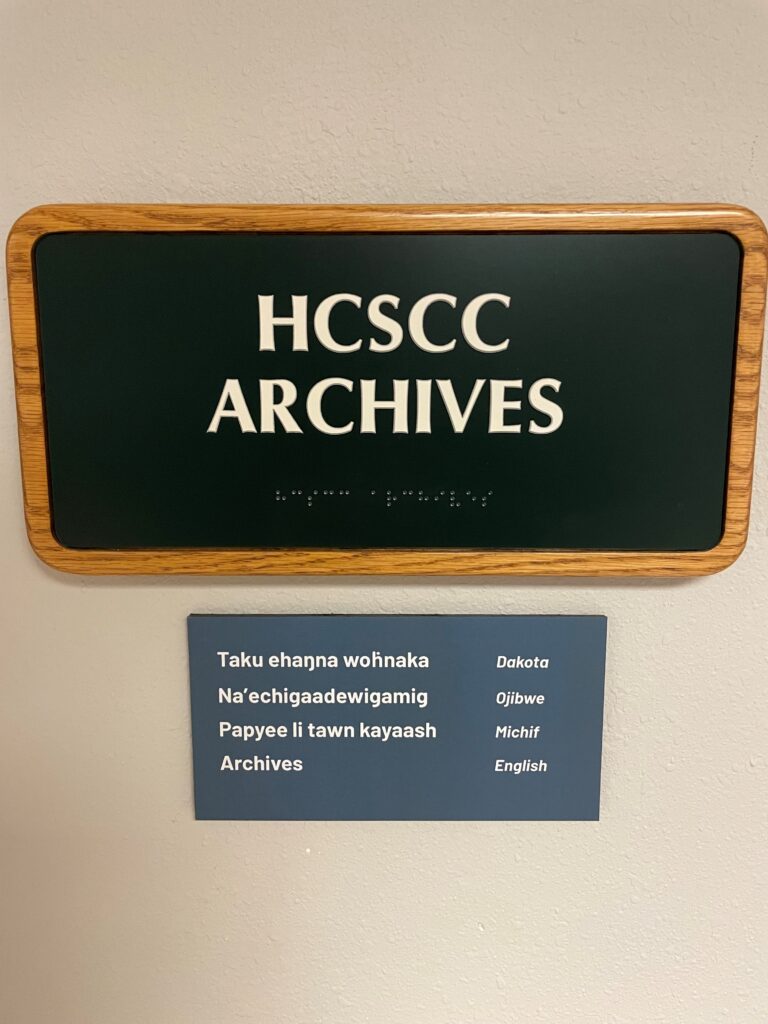
clay county histories
Markus Krueger | Program Director HCSCC
One of my favorite authors, Anton Treuer, would point out that the Hjemkomst Center is filled with signs in a foreign language. Yes, the building’s name is Norwegian for “Homecoming,” the name of the famous Viking Ship housed here, but Treuer enjoys pointing out that English signs like “Gift Shop” and “Restroom” are also in a European language not native here. Treuer is a professor of Ojibwe Language at Bemidji State University, and this prolific author is one of the leading figures in an exciting resurgence of Ojibwe language learning. Fargo-Moorhead’s public and academic libraries along with their partners (including our museum) recently picked his book Everything You Wanted to Know About Indians but were Afraid to Ask for the 1Book1Community group read, culminating in his superb talk at Concordia College on October 26. You can watch it online.
But it was in another one of his books, The Language Warrior’s Manifesto, where I learned about the Bemidji Ojibwe Language Project. Businesses throughout the city of Bemidji are adding Ojibwe signage in their establishments. I loved the idea so I contacted the man behind the program – Michael Meuers.
As you can learn about in our Clay County history exhibit Ihdago Manipi: Clay County at 150, the land that is now called Clay County, Minnesota, is part of the homeland of the Ojibwe people. But since this is also the homeland of the Dakota and the Métis people, I wanted our signs to include words in Dakota and Michif (the language of the Métis).
Miigwech (thank you) to Michael Meuers and the Ojibwe Language Project for supplying me with the 19 words I requested – everything from Coat Room to Senior Center. For the other languages, I turned to the advisors who guided our research and writing for the above-mentioned exhibit. Pidamaya to Glenn Wasicuna for providing the Dakota translation, and Maarsii to Liselotte Erdrich and Kade Ferris for the Michif.
One thing you’ll notice is that these four languages are very different from each other. Take one example: Restrooms (English) – Tankad ti (Dakota) – Miiziiwigamigoon (Ojibwe) – Klawzet (Michif). Dakota and Ojibwe people have long been neighbors but they do not speak related languages. English, German, and Spanish all contain similar words because they are cousin languages in the Indo-European family, but you can tell from these signs that Ojibwe (a language of the Algic family) and Dakota (a Siouan family language) look as different from each other as they do to English. Michif, on the other hand, is a fascinating mixture of several languages – Ojibwe, Cree, Assiniboine, French and a wee bit of Scottish Gaelic – resulting in a new and unique indigenous language. The Michif word “Klawzet,” I presume, has French roots – many cultures call bathrooms “water closets.”
Unlike French, however, Michif spelling makes sense. Ojibwe has a reputation for long words, but these too are spelled how they sound, so don’t get intimidated – sound it out. Dakota words have a few more letters to represent sounds not found in English. As for the English words, good luck! There’s no rhyme or reason for how those are spelled.

